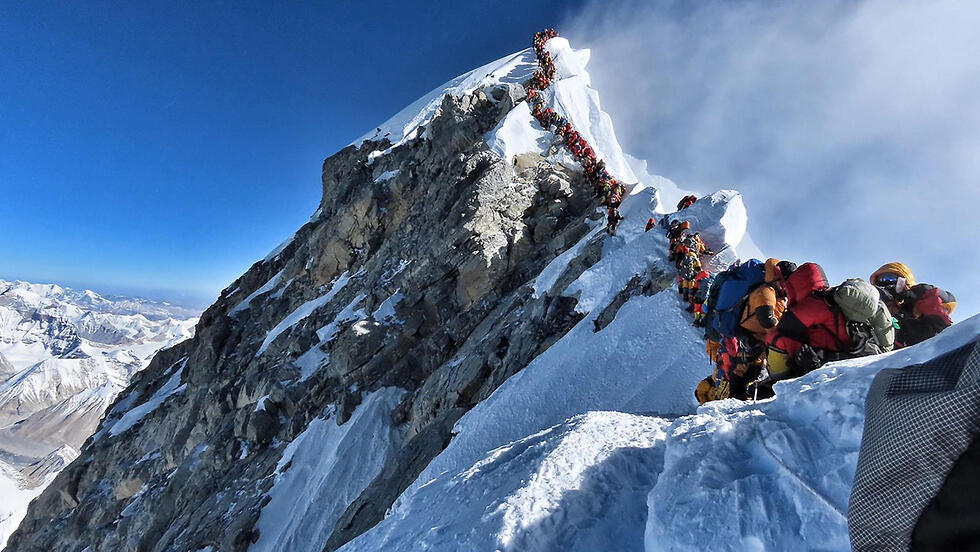Getting your Trinity Audio player ready...
Every year, many climbers attempt to reach the summit of Mount Everest, the world's highest peak. This past week, favorable weather conditions prompted a surge of climbers heading for the summit, leading to a massive line of climbers and their guides.
Vinayak Malya, one of the climbing guides, posted videos on Instagram showing the congestion at the summit—dozens of climbers packed closely together at an altitude of 8,849 meters.
One of the photos was taken just before a crumbling ridge on the summit, known as the "death zone," collapsed. The collapse resulted in tragedy when a British climber and his guide fell to their deaths. Additionally, a Kenyan climber and his guide fell into an abyss; the climber's body was found, but the Nepali guide remains missing.
These two fatalities from the past week add to the deaths of two other climbers, one Mongolian and one Romanian, who also fell during this climbing season.
Experts argue that too many people attempt to climb to the world's highest summit, and factors such as sudden weather changes, random ridge collapses, inadequate preparation, poor readiness for extreme weather conditions and inability to cope with low oxygen levels turn the climb into a deadly trap for many.
Five years ago, in May 2019, a remarkable photo was published showing a similar line of climbers on their way to Everest's summit. About 200 people had taken advantage of clear weather to rush to the summit and ended up stuck on the way. AFP released a photo showing a long line of climbers near the summit, waiting for those ahead to move on. The queue forced climbing teams to stand for hours in freezing temperatures just to reach the peak, risking frostbite and fatal altitude sickness. Nepali officials reported that the congestion led to some climbers suffering from exhaustion and dehydration.



